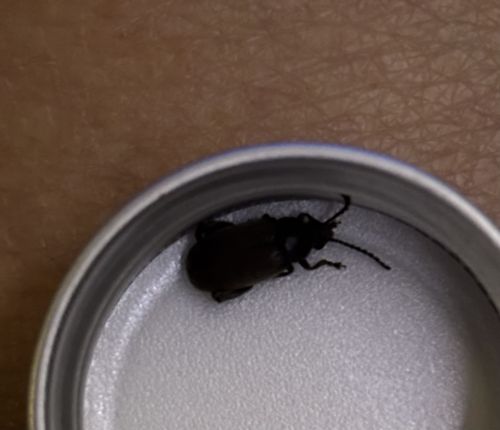False Powderpost Beetle (likely an Anobiidae or Bostrichidae species)
Scientific Name: Difficult to determine exact species from the image, but likely Ptinus spp. or a related genus within Anobiidae/Bostrichidae.
Order & Family: Order: Coleoptera, Family: Anobiidae (or closely related Bostrichidae)
Size: Typically 2-7 mm, though some species can be larger or smaller.

Natural Habitat
Larvae infest dead or decaying wood, sometimes dried plant material or stored food products. Adults are found near these larval habitats, often emerging from wood. Many species are associated with forests, lumberyards, and wooden structures.
Diet & Feeding
Larvae feed on wood, sometimes fungi, decaying plant material, or stored products depending on the specific species. Adults in some species do not feed or feed very little.
Behavior Patterns
Larvae develop in decaying wood or fungi. Adults are attracted to lights at night and can sometimes be found indoors, especially in older homes with wooden structures or near rotting wood. They are generally slow-moving.
Risks & Benefits
Potential Risks: Some species within these families (e.g., Powderpost Beetles) are wood-boring pests that can damage wooden structures, furniture, and flooring. If this is a true powderpost beetle, it can cause significant structural damage over time. Potential Benefits: Some species play a role in decomposition of dead wood in ecosystems.
Identified on: 8/16/2025